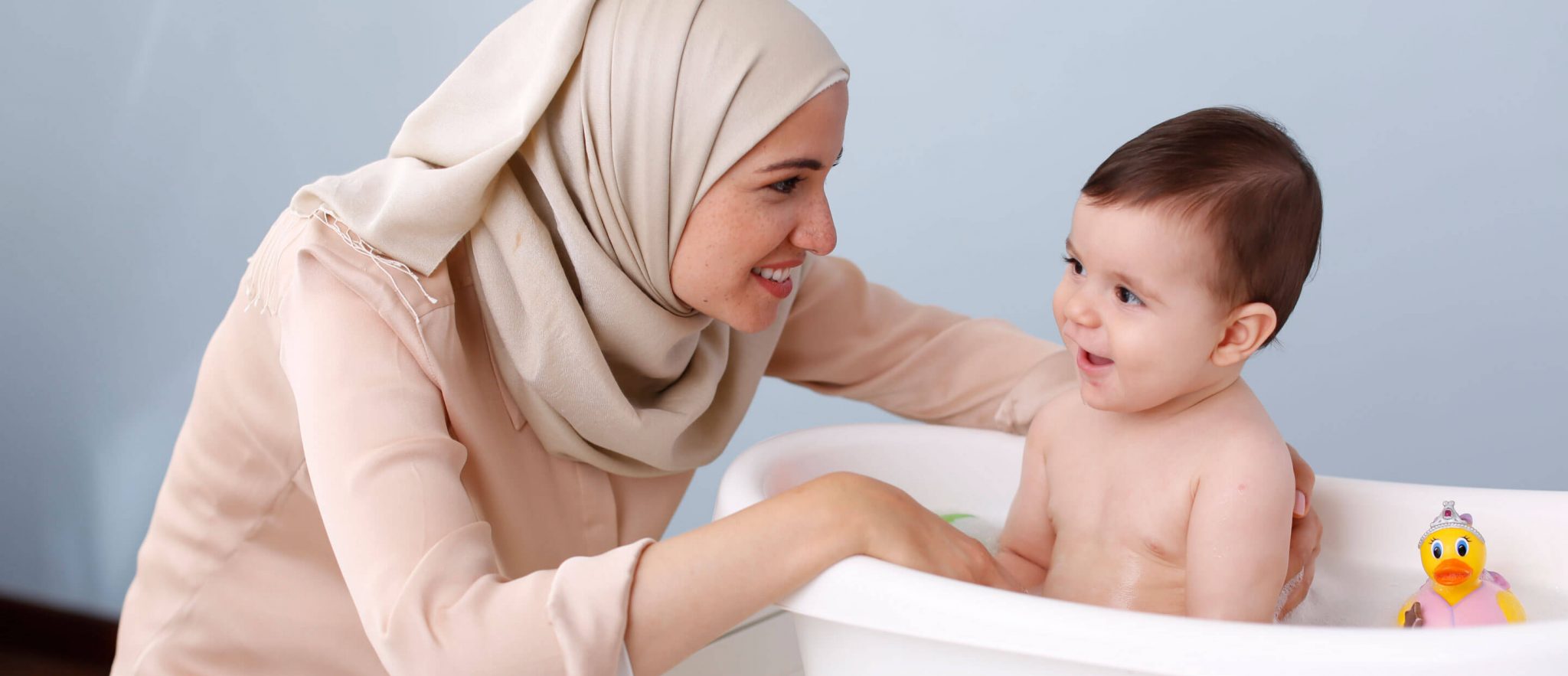Bathing Your Baby And Addressing Their Fear Of The Bath

Bath time is a great bonding experience with your baby, but it can be tricky if your baby is uncomfortable and scared. Find out how to bathe a baby, how often your baby needs to be bathed, and other baby bath tips.
Keeping your baby clean is essential, but bath-time should be more than just a practical part of baby care. Splashing, playing and relaxing in the bath should be an enjoyable bonding experience for both baby and parent. Continue reading for tips on how to bathe a baby baby, suggestions on easing their fear of bathing and water, as well as other baby bath tips.
HOW TO BATHE A BABY
Check the temperature
Both the room and the bath water need to be comfortably warm – not too hot, just so your baby doesn’t get cold. Fill the bath with two inches of water, then test with your wrist or elbow to check the temperature.
Be prepared
Young children should never be left unattended around water, so make sure you have everything you need including a towel, a gentle shampoo, a clean diaper and clothes, a bowl of clean water and two washcloths or cotton wool before you begin.
Baby toiletries
The UK National Health Service recommends using plain water to clean baby’s delicate skin for the first month. If you want to use toiletries after that, make sure that they are baby-friendly products.
Support your baby
After removing baby’s nappy and cleaning away any mess, carefully lower baby into the tub, supporting their head and shoulders.
Wash the face separately
Use a bowl of clean water to wash baby’s face and hair gently with a washcloth or cotton wool. This will ensure that no nasties from the nappy area come into contact with the eyes, ears, nose and mouth. Use a second washcloth to wash baby’s body, being careful to get into the folds and creases.
How often does my newborn need a bath?
There’s no need to give your newborn a bath every day. Three times a week should be enough.
Is it better to bathe my baby in the morning or at night?
That’s up to you. Choose a time when you’re not rushed or likely to be interrupted. Some parents prefer morning baths, when their babies are more alert. Others prefer to make baby baths part of a calming bedtime ritual.

FEAR OF TAKING A BATH
A fear of water can be something that’s evident from the beginning, or it can seem that your baby suddenly hates bath times. Help your reluctant bather become a water baby with the following baby bath tips:
Top and tail
The UK National Health Service advises that you don’t need to bath your baby every day. ‘Topping and tailing’ involves just washing their face, neck, hands and bottom using a bowl of warm water and clean cotton wool for each area. Don’t forget to dry between the skin folds.
Relax time
Make the bath a calm place of relaxation and try to avoid harsh overhead lights. Gentle music can help make bath-time more tranquil – hopefully leading to a better night’s sleep if at night!
Bathe with baby
If your baby finds bathing really distressing, a simple solution is to get in the tub with them. Parent and baby bath-time can be a lovely way to bond, and having mum or dad close should help baby feel secure.
Try a different bath time
If bath time normally takes place in the evening, before bed, your child might be more receptive to a daytime bath. Try a morning or afternoon splash.
Toddler’s fear of water
Your toddler’s sudden fear of bath time can be eased by making it into a play activity. Here are some fun ideas to try:
Bath toys
Turn bath-time into playtime with sprinklers, cups and squirters. You can also get foam shapes/letters that stick to the tub and can help develop early learning skills too.
Bath-time stories
Why not bring storytelling into the bathroom? Waterproof bath books are great for your toddler to hold, and imaginative toys such as pirate ships and toy animals can help bring stories to life.
Toddler toiletries
Let your toddler wash with fun, toddler-friendly toiletries. Moldable foams and colorful soap crayons that will clean your toddler while they play.
No more tears
Use a ‘shampoo shield’ to keep suds out of eyes and, if your toddler really hates hair-washing, you can keep it to once a week.
Stay safe
Of course, the most important thing when bathing your baby or toddler is safety. A child can slip under the water and drown in seconds, so never leave your baby or toddler unsupervised, even for a minute.
Also, don’t put your baby or toddler into a tub when the water is still running.The water temperature could change or the water could get too deep.
Safety aids such as tap guards and non-slip mats can take the stress out of bathing your baby and allow you to focus on making it a fun, enjoyable and relaxing part of your child’s day.
Related Articles

Join Aptaclub
Get week-by-week updates on your baby’s development and your pregnancy. Receive expert advice, postal packs for your stage and much more

Monitor your child’s growth
Compare your child’s weight with other children their age
Need advice?
Our team of experts is ready to answer your questions and support you on your journey from pregnancy to toddler hood. For more information and relevant advice, please contact us between 9am-6pm from Sunday to Friday.




